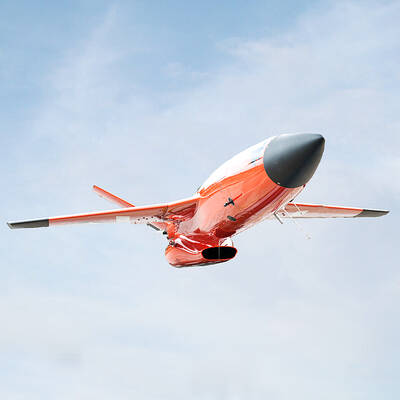Governments worldwide yesterday were scrambling to prevent the spread of COVID-19 after fresh infections emerged linked to European hotspot Italy amid dire warnings that countries are not ready to contain the outbreak.
Giving most concern on that score in the Middle East, Iran has emerged as a major hotspot. Nineteen people have died and 44 further infections were reported across the country in the past 24 hours, including Iranian Deputy Minister of Health Iraj Harirchi.
In another crucial hotspot, South Korea, the Korea Centers for Disease Control and Prevention reported 284 new infections — its largest daily increase to date — taking the overall national tally to 1,261, with the death toll rising to 12.
The vast majority — 90 percent — of the new infections were in Daegu, the country’s fourth-largest city, and the neighboring province of North Gyeongsang.
The streets of Daegu — which has a population of 2.5 million — have been largely deserted for days.
Italy has become the latest major cause for concern after France, Austria, Croatia and Switzerland all reported infections in people who had recently been to its worst-hit Lombardy region.
France reported a second death — this time of one of its nationals after a Chinese tourist died earlier this month.
Greece reported its first case — a woman who had recently travelled to northern Italy — as did Algeria — an Italian national who had arrived in the country last week.
The first case in Latin America was also confirmed yesterday, after a Sao Paulo hospital had flagged the possible infection of a 61-year-old who had visited Italy.
Several governments are now advising people against travel to Italy, in particular to the regions worst affected in the north, as well as introducing checks for passengers arriving from the country.
The Italian outbreak has seen 12 deaths and 374 cases within the country.
Eleven towns have been put in isolation and tens of millions people have been affected by school closures, and the cancelation of cultural and sporting events.
At the WHO headquarters in Geneva, Switzerland, WHO Assistant Director-General Bruce Aylward, who headed an international expert mission to China, hailed the drastic quarantine and containment measures taken by Beijing.
However, he told reporters on Tuesday that other nations were “simply not ready” to contain the outbreak.
“You have to be ready to manage this at a larger scale ... and it has to be done fast,” Aylward said.
The virus has killed 2,715 people and infected more than 78,000 in China.
There were 52 more deaths reported in China yesterday — the lowest in three weeks — with no fatalities outside the epicenter in Hubei Province.
The Chinese National Health Commission also reported a drop in new infections to 406, with only five outside Hubei — a figure that would boost confidence that the rest of the country is containing the epidemic.
Additional reporting by Reuters

CROSS-STRAIT COLLABORATION: The new KMT chairwoman expressed interest in meeting the Chinese president from the start, but she’ll have to pay to get in Beijing allegedly agreed to let Chinese Nationalist Party (KMT) Chairwoman Cheng Li-wun (鄭麗文) meet with Chinese President Xi Jinping (習近平) around the Lunar New Year holiday next year on three conditions, including that the KMT block Taiwan’s arms purchases, a source said yesterday. Cheng has expressed interest in meeting Xi since she won the KMT’s chairmanship election in October. A source, speaking on condition of anonymity, said a consensus on a meeting was allegedly reached after two KMT vice chairmen visited China’s Taiwan Affairs Office Director Song Tao (宋濤) in China last month. Beijing allegedly gave the KMT three conditions it had to

STAYING ALERT: China this week deployed its largest maritime show of force to date in the region, prompting concern in Taipei and Tokyo, which Beijing has brushed off Deterring conflict over Taiwan is a priority, the White House said in its National Security Strategy published yesterday, which also called on Japan and South Korea to increase their defense spending to help protect the first island chain. Taiwan is strategically positioned between Northeast and Southeast Asia, and provides direct access to the second island chain, with one-third of global shipping passing through the South China Sea, the report said. Given the implications for the US economy, along with Taiwan’s dominance in semiconductors, “deterring a conflict over Taiwan, ideally by preserving military overmatch, is a priority,” it said. However, the strategy also reiterated

‘BALANCE OF POWER’: Hegseth said that the US did not want to ‘strangle’ China, but to ensure that none of Washington’s allies would be vulnerable to military aggression Washington has no intention of changing the “status quo” in the Taiwan Strait, US Secretary of Defense Pete Hegseth said on Saturday, adding that one of the US military’s main priorities is to deter China “through strength, not through confrontation.” Speaking at the annual Reagan National Defense Forum in Simi Valley, California, Hegseth outlined the US Department of Defense’s priorities under US President Donald Trump. “First, defending the US homeland and our hemisphere. Second, deterring China through strength, not confrontation. Third, increased burden sharing for us, allies and partners. And fourth, supercharging the US defense industrial base,” he said. US-China relations under

The Chien Feng IV (勁蜂, Mighty Hornet) loitering munition is on track to enter flight tests next month in connection with potential adoption by Taiwanese and US armed forces, a government source said yesterday. The kamikaze drone, which boasts a range of 1,000km, debuted at the Taipei Aerospace and Defense Technology Exhibition in September, the official said on condition of anonymity. The Chungshan Institute of Science and Technology and US-based Kratos Defense jointly developed the platform by leveraging the engine and airframe of the latter’s MQM-178 Firejet target drone, they said. The uncrewed aerial vehicle is designed to utilize an artificial intelligence computer